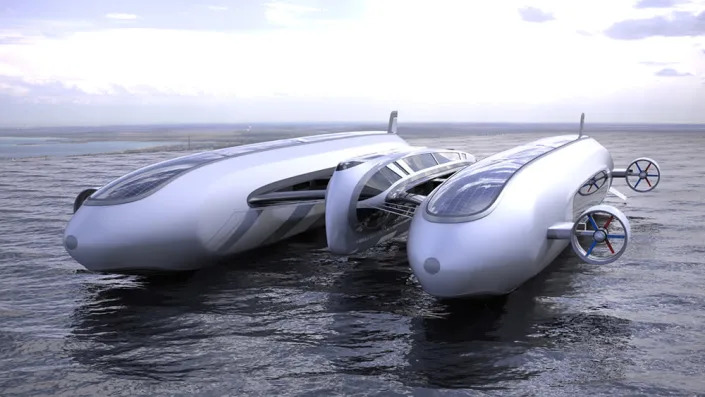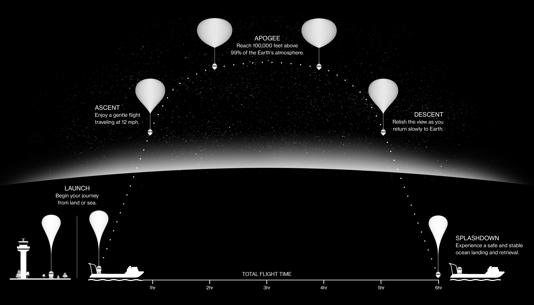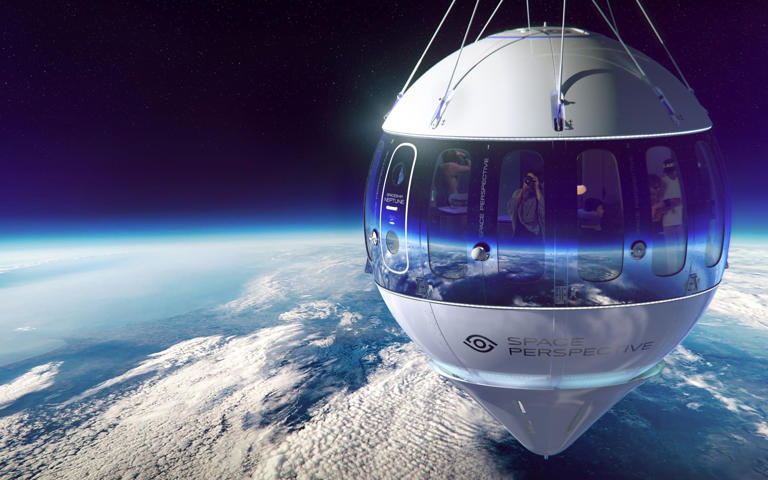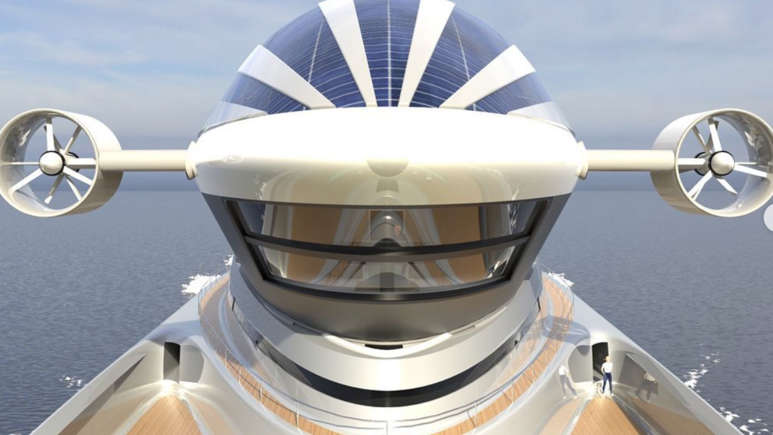New Mars Forums
You are not logged in.
- Topics: Active | Unanswered
Announcement
#1 2021-12-18 17:16:34
- tahanson43206
- Moderator
- Registered: 2018-04-27
- Posts: 22,474
Balloon Tourist Flights on Earth
SpaceNut ... I asked FluxBB to show all topics that contain the word "balloon"
There are a number of topics, but none were about this specific company ...
It is likely we have topics elsewhere in the forum that contain posts about this company.
This post could be added to those topics ...
https://www.yahoo.com/news/space-balloo … 00387.html
Orlando Sentinel
Space balloon company to bring 240 jobs to Brevard County
Richard Tribou, Orlando Sentinel
Fri, December 17, 2021, 10:06 AM
The company that looks to send tourists up on a space balloon from Brevard County from the old Kennedy Space Center shuttle landing facility also has chosen to build a campus and manufacturing complex on the Space Coast.Space Perspective, which has already sent up a successful test flight in 2021 and aims to have its first passengers in 2024, announced it would make the $38 million investment that projects the creation of 240 full-time permanent jobs in Brevard County by the end of 2026. The company said the annual average wage would be $80,000, and hiring will continue through 2022.
“We’re witnessing a revolution in space access and Florida’s Space Coast is now the place for production, as well as launch,” said Lynda Weatherman, president and CEO of the Space Coast Economic Development Commission. “With its selection of Titusville, Space Perspective joins Lockheed Martin, Astrotech, Boeing and others in what is quickly becoming a significant aerospace hub across the causeway from Cape Canaveral.”
The campus and balloon manufacturing facility will be at the Space Coast Airport and Spaceport in Titusville, the updated name of Space Coast Regional Airport in Titusville after it was awarded spaceport status in 2020 by the Federal Aviation Administration.
Florida beat out four other states for the campus, according to the company.
“The amazing opportunities in space tourism made the selection process very competitive. Florida and its system of spaceports became the front-runner,” said Taber MacCallum, one of the company’s founders and a co-CEO. “This is a win for the entire state of Florida, as we are planning launch operations from three Florida spaceports.”
Any tax incentives to entice the company to the state were not announced, and would be subject to nondisclosure agreements, according to Dale Ketcham with Space Florida, the state’s aerospace economic development agency.
That’s the same situation with the September announcement from satellite manufacturing company Terran Orbital when it said it would bring a massive factory to Brevard with 2,100 high-paying jobs. Space Florida is also pursuing negotiations under the name “Project Griffin” with an undisclosed company to bring another 2,100 spacecraft manufacturing jobs to a new facility at Orlando-Melbourne International Airport.
Central to Space Perspective’s plans are the construction of a $9 million, 120,000 square foot manufacturing building projected to be up and running within 24 months.
“As space tourism becomes a reality, it is exciting to see its potential to create jobs in Brevard County, particularly those in manufacturing,” said Brevard County Commission Chairman Kristine Zonka. “I am confident that Space Perspective will find the workforce on Florida’s Space Coast to be second to none and a key ingredient as they scale up.”
Existing plans have initial flights of the balloon to begin from the Launch and Landing Facility, now run by Space Florida, at Kennedy.
Reservations are already open for the $125,000-per-person flights on what will be its first passenger-ready balloon, the Spaceship Neptune. More than 500 tickets have already been sold, the company stated. Deposits only require $1,000 down.
Unlike the shorter, much more expensive, but higher altitude flights of Blue Origin and Virgin Galactic, the space balloon takes a different approach, offering a six-hour flight, with a two-hour ascent to 20 miles altitude, followed by two hours of floating above Earth before a two-hour descent.
MacCallum and co-founder Jane Poynter, known for living for two years isolated from the world in the Biosphere 2 habitat in the 1990s, have received millions from an investment group that includes motivational speaker Tony Robbins.
Its test flight in June saw its unmanned balloon reach an altitude of 108,409 feet crossing Florida from the east to the west and splashing down in the Gulf of Mexico during a six-hour, 39-minute flight. The company plans a crewed test flight in 2023.
The 650-foot-tall balloon can carry up to eight guests along with the pilot in a capsule that includes a bar and bathroom. It will offer 360-degree views and reclining seats.
The company aims to pilot 25 flights in its first year of operation, flying from locations around the world, but with initial operations from Brevard County.
(th)
Offline
Like button can go here
#2 2022-01-12 22:24:52
- SpaceNut
- Administrator
- From: New Hampshire
- Registered: 2004-07-22
- Posts: 29,618
Re: Balloon Tourist Flights on Earth
They seem to be coming back Meet Air Yacht, a Bonkers Flying Superyacht Concept Powered by Two Helium Blimps
Made from carbon fiber, the Air Yacht has one main 262-foot hull sandwiched between a pair of 492-foot airships. These two “floating balloons,” as Lazzarini describes them, will be divided into hives to store helium gas. Think of it as a superyacht with two blimps that can lift it to the skies.
The Italian outfit hasn’t gone into too much detail regarding how this propulsion actually works but says the compressed helium allows the Air Yacht to “fly” for up to 48 hours at a top speed of 60 knots. The cruiser is also equipped with eight counter-rotating electric engines powered by ultra-light batteries and solar panels. This setup enables the yacht to sail on the water at 5 knots with no noise or pollution.
great images to support the design...
Offline
Like button can go here
#3 2022-05-19 14:04:15
- Mars_B4_Moon
- Member
- Registered: 2006-03-23
- Posts: 9,776
Re: Balloon Tourist Flights on Earth
China's self-developed floating airship breaks record
https://www.spacedaily.com/reports/Chin … d_999.html
China's self-developed floating airship, designed for atmosphere observation, reached a record altitude of 9,032 meters in Tibet Autonomous Region on Sunday, according to its developer.
Developed by the Aerospace Information Research Institute of the Chinese Academy of Sciences (CAS), the floating airship "Jimu No.1" type III has a volume of 9,060 cubic meters.
Offline
Like button can go here
#4 2023-10-20 19:26:41
- tahanson43206
- Moderator
- Registered: 2018-04-27
- Posts: 22,474
Re: Balloon Tourist Flights on Earth
This topic has been idle for a while.... the story at the link below is about a decidedly non-tourist exploration flight, but it certainly could lead to tourist excursions, if it is successful.
https://www.msn.com/en-us/travel/news/a … 12f0&ei=26
Popular Mechanics
An Airship Is Ready for the First Non-Stop, Fully Electric, Around-the-World Flight
Story by Tim Newcomb •Euro Airship is planning an around-the-world, non-stop flight with Solar Airship One. It would be the first flight to make the trip without using fossil fuels.
© Solar Airship One
Euro Airship is planning an around-the-world, non-stop flight with Solar Airship One. If it succeeds, it would become the first flight to make the trip without using fossil fuels.The aircraft features a solar film and stores surplus electricity in onboard fuel cells.
Euro Airship hopes that the demonstration ship can one day turn into a marketable aviation solution.
Fossil fuels need not apply for Solar Airship One’s upcoming voyage. The fully electric airship, designed by the company Euro Airship, plans to fly non-stop around the world in 2026. Euro Airship expects to accomplish the feat using solar and hydrogen power with an electric engine, traveling roughly 25,000 miles in a 20-day adventure.
If the company accomplishes this dream, it would become the first fossil fuel-less flight of its kind.
“Throughout history, all great dreams have been considered impossible before they were accomplished,” the company writes on its website. “Today, the adventure must continue by realizing a great epic in the service of environmental protection and renewable energies.”
The Solar Airship One’s plan has the airship crossing 25 countries, two oceans, and several seas. The ship will use a solar film covering the entire upper surface for “direct and constant electrical power during the day.” Expected surplus electricity can be stored in fuel cells, which produce hydrogen via water electrolysis to keep the ship going.
This combination of solar and hydrogen power removes the need for fossil fuels and keeps the airship on a quiet, electrical path for the entire flight.
With a double-envelop on the rigid airship stabilizing the ship’s pressures and regulating its internal temperatures, the airship is expected to handle all weather conditions, feature an automatic de-icing system, and require no permanent heavy infrastructure on the ground.
Solar Airship One will feature an aluminum structure encasing 15 helium envelopes—each of which will be independently managed, something that the company claims will allow for “instantaneous response and anticipation of meteorological events.”
Sticking close to the equator, the roughly 21,600 nautical miles flight should hover around 20,000 feet. While Euro Airship claims that the journey could be wrapped in as few as 20 days, they admit that it may take up to 30.
Profile Picture
Construction of Solar Airship One is scheduled to begin in 2024 ahead of the 2026 flight.
“The goal is to educate, to catalyze the young generation, for us it is very important because of the climate change, because of the natural disasters coming,” Dorine Bourneton, Euro Airship crewmember, told Flying magazine. “We need to have a new mobility—a green mobility.”
Along with Bourneton, the three-person team piloting Solar Airship One will include former astronaut and French Air Force pilot Michel Tognini and around-the-world balloon flight pilot Bertrand Piccard.
Euro Airship plans to prove its technology during this scheduled experimental flight and bring a new style of airship to the sky—one that can fly without coming down. The company expects to earn an experimental certification to fly in 2026.
Euro Airship’s goals include offering ecotourism trips and unmanned surveillance flights—the concept of flying without needing to refuel gives the latter some extra heft. They even want to eventually establish a presence in logistics services, as the airships can handle heavy payloads.
“The Solar Airship project,” says Corinne Jouannay of Capgemini Engineering in a news release, ”demonstrates that it is possible to catalyze an ecosystem to foster the emergence of sustainable air transport solutions.”
(th)
Offline
Like button can go here
#5 2023-10-22 09:57:00
- GW Johnson
- Member
- From: McGregor, Texas USA
- Registered: 2011-12-04
- Posts: 6,041
- Website
Re: Balloon Tourist Flights on Earth
At one time, there was an outfit planning to offer balloon flights, to compete with the suborbital rocket services. I do not know if that outfit still exists, much less how close it might be to operations.
All I can say is this: (1) altitudes of 100,000 to 150,000 feet ought to be feasible while carrying a passenger payload, if you skimp on everything with any weight. At about 120,000 feet, the density is 0.5% that of sea level. That means about 99.5% of the atmosphere is below you. The daytime sky should be black and full of stars looking away from the sun. Such was observed at about 100,000 feet in the old rocket plane flights.
The trick to high altitude balloon flights is size. Buoyancy is density difference times balloon volume. This gets hard to come by when densities are low. But Volume ~ dimension cubed. The weight of the balloon envelope is more or less material weight density times thickness x balloon envelope surface area. Surface area ~ dimension squared. So there is an economy of scale: bigger is better if you are going into thin air. The buoyancy minus the envelope weight is the payload a given balloon can carry.
To carry more than one person at a time is going to require whopping big balloons.
GW
GW Johnson
McGregor, Texas
"There is nothing as expensive as a dead crew, especially one dead from a bad management decision"
Offline
Like button can go here
#6 2023-10-22 18:49:23
- Calliban
- Member
- From: Northern England, UK
- Registered: 2019-08-18
- Posts: 4,176
Re: Balloon Tourist Flights on Earth
Could airships return to the sky for freight and passenger transportation?
https://www.popularmechanics.com/flight … -comeback/
Compared to jets, rigid airships would be much slower. Speed is limited to about 100mph by drag forces on the enormous envelope. Whereas jet aircraft fly at 30,000 - 40,000', airships cruise at 1000 - 2000'. A significant problem for airships is that for large scale usage, there is no alternative to hydrogen as a lifting gas. Helium is only acceptable so long as the airship remains a niche application. If airships were to replace planes for a significant portion of passenger traffic, we would need to demonstrate safe use of hydrogen as lifting gas.
Whilst slower, the interior of airships could be far more spacious and comfortable than an aeroplane.
https://www.airshipsonline.com/airships … terior.htm
Last edited by Calliban (2023-10-22 18:54:45)
"Plan and prepare for every possibility, and you will never act. It is nobler to have courage as we stumble into half the things we fear than to analyse every possible obstacle and begin nothing. Great things are achieved by embracing great dangers."
Offline
Like button can go here
#7 2023-12-02 19:42:11
- SpaceNut
- Administrator
- From: New Hampshire
- Registered: 2004-07-22
- Posts: 29,618
Re: Balloon Tourist Flights on Earth
Space Flight Without the Rocket Fuel? A Florida-Based Company Is Aiming for the Stars.
Florida-based Space Perspective turned to a pressurized, hydrogen-inflatable design— Spaceship Neptune, including a “SpaceBalloon” (made of more than 18 million cubic feet of temperature-resistant material and standing 700 feet tall when ready for liftoff); a Reserve Descent System (a four-parachute emergency method for returning crew and passengers to Earth in the event of SpaceBalloon failure); and the creature comfort-rich Neptune Capsule for crew and passengers.
Flight path
The current reservation cost for future Space Perspective flights sits at US$125,000—a comparative bargain to services such as Virgin Galactic, which cost as much as US$450,000. No rockets. No G-forces. Just a gentle six-hour journey to space at cycling speed with time to take in incredible views and contemplate the world below.
Offline
Like button can go here
#8 2023-12-03 11:28:51
- Calliban
- Member
- From: Northern England, UK
- Registered: 2019-08-18
- Posts: 4,176
Re: Balloon Tourist Flights on Earth
It is essentially an expensive joy ride and doesn't really get people into space. A height of 100,000' is only about 7% of the height of the ISS. But it will give people the experience of being above the sensible atmosphere.
"Plan and prepare for every possibility, and you will never act. It is nobler to have courage as we stumble into half the things we fear than to analyse every possible obstacle and begin nothing. Great things are achieved by embracing great dangers."
Offline
Like button can go here
#9 2023-12-03 12:16:00
- SpaceNut
- Administrator
- From: New Hampshire
- Registered: 2004-07-22
- Posts: 29,618
Re: Balloon Tourist Flights on Earth
Even sub orbital a flat earther would still not believe their own eyes that the earth is round....
Offline
Like button can go here
#10 2023-12-27 18:03:20
- SpaceNut
- Administrator
- From: New Hampshire
- Registered: 2004-07-22
- Posts: 29,618
Re: Balloon Tourist Flights on Earth
Airlander 10, also known as HAV 304, is a mixture of airship and airplane.
Designed by the UK-based company Hybrid Air Vehicles, the vehicle first took off in 2012. The vehicle, which is approximately 92 meters long, can reach a height of 5 thousand meters and a speed of 148 kilometers per hour can be reached. Although it does not need any runway for take-off and landing, it can also stay in the air for two weeks without interruption. It made its first test flight on August 17, 2016, taking off from Cardington Airport in Bedfordshire. In this flight, which lasted about 30 minutes, it reached an altitude of 1,500 meters and reached a speed of 64 kilometers per hour. Since the flammable hydrogen gas used in zeppelins, whose production became widespread in the early 20th century, caused many air disasters, helium gas, which did not have this feature, was used in Airlander 10.
Offline
Like button can go here
#11 2023-12-27 18:54:07
- Mars_B4_Moon
- Member
- Registered: 2006-03-23
- Posts: 9,776
Re: Balloon Tourist Flights on Earth
I believe there is good scientific use as a long duration analogue comparing Earth to Mars
It is essentially an expensive joy ride and doesn't really get people into space.
Calliban I mostly agree with this but I believe it has its usefulness in science , even if you lift something of mass like a small pet weight or school-bag say 8 Kg or 17 lbs on a long trip, or say as small as a 'Cat' 10 pounds or 4.5 kilograms even at this weight there are so many experiments you can do with a payload of this size. I was reading up HAPS or ULDB, there is a possibility of testing Balloons at 50 km or 31 miles, you could see what happens to plants or small animals at these conditions on a long duration flight. The radiation and temperatures of high altitude long duration balloons are very comparable to the Mars radiation. On Mars with human colonists at separate locations there could be an emergency to 'fly' an essential medicine pills to a colony tens of miles or tens upon tens of km away, Earth might not be able to deliver help and your local rocket ship might not be ready. If Mars can build its local fly machine it will be a positive, the air of Mars is less 'even' than Earth it is very difficult to fly but you can fly, it is much thinner but the temperate and pressure conditions high up in the atmosphere of Earth can be compared with condition on Mars. There are regions it could be too difficult some areas such as highlands are of lighter thinner air and some Basin are of thicker atmosphere and denser air, with less radiation and higher pressure. We might not support 'joy rides' but there could be scientific spin off from these commercial trips.
Offline
Like button can go here
#12 2024-02-23 06:13:20
- Mars_B4_Moon
- Member
- Registered: 2006-03-23
- Posts: 9,776
Re: Balloon Tourist Flights on Earth
Peek Inside the Space Balloon Lifting Passengers 100,000 Feet Above Earth’s Surface
https://www.popularmechanics.com/space/ … on-flight/
Offline
Like button can go here
#13 2024-02-29 19:50:07
- SpaceNut
- Administrator
- From: New Hampshire
- Registered: 2004-07-22
- Posts: 29,618
Re: Balloon Tourist Flights on Earth
Offline
Like button can go here
#14 2024-03-04 18:36:10
- SpaceNut
- Administrator
- From: New Hampshire
- Registered: 2004-07-22
- Posts: 29,618
Re: Balloon Tourist Flights on Earth
Offline
Like button can go here
#15 2024-03-04 18:51:28
- tahanson43206
- Moderator
- Registered: 2018-04-27
- Posts: 22,474
Re: Balloon Tourist Flights on Earth
For SpaceNut re #14
Impressive find! Thanks !!!
That would be quite a "tourist" flight, and a lot safer than the high altitude idea.
There might be a reason to question how "safe" a flight across the polar ice cap might be, but I'll bet passengers have to sign risk release statements before either flight.
(th)
Offline
Like button can go here





